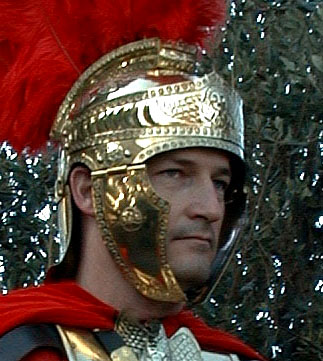
|
When the time came to get down to the business of ripping the enemy's guts out, the plumes came off, the men took their appointed stations a yard apart, the heads went down, the shields went up, the swords came out and didn't stop their methodical thrust, jab, thrust until all those on one side (usually the enemy) were dead, captured, or in headlong flight. Each soldier would stand in the front lines, methodically slaying the enemy for fifteen or twenty minutes at a stretch, then fall back to rest while a fresh man came up to take his place. The legionaries had the routine down pat, having learned it by heart through endless hours of gruelling drills and weapons practice. It was this drill and discipline that gave these short little Italian fellows (and their short little Greek, Syrian, and Egyptian comrades the winning edge over the much bigger and stronger Celts, Germans, and Illyrians. While the "Barbarian" adversaries of Rome often relied on individual heroics, grandstand antics, insults and jeering, blue body paint, ferocious war cries, and other forms of martial showing - off, the Romans fought as a unit with each man learning to follow orders precisely and immediately, making his own persona subservient to the higher cause of common a purpose and legion's fighting spirit.
|
